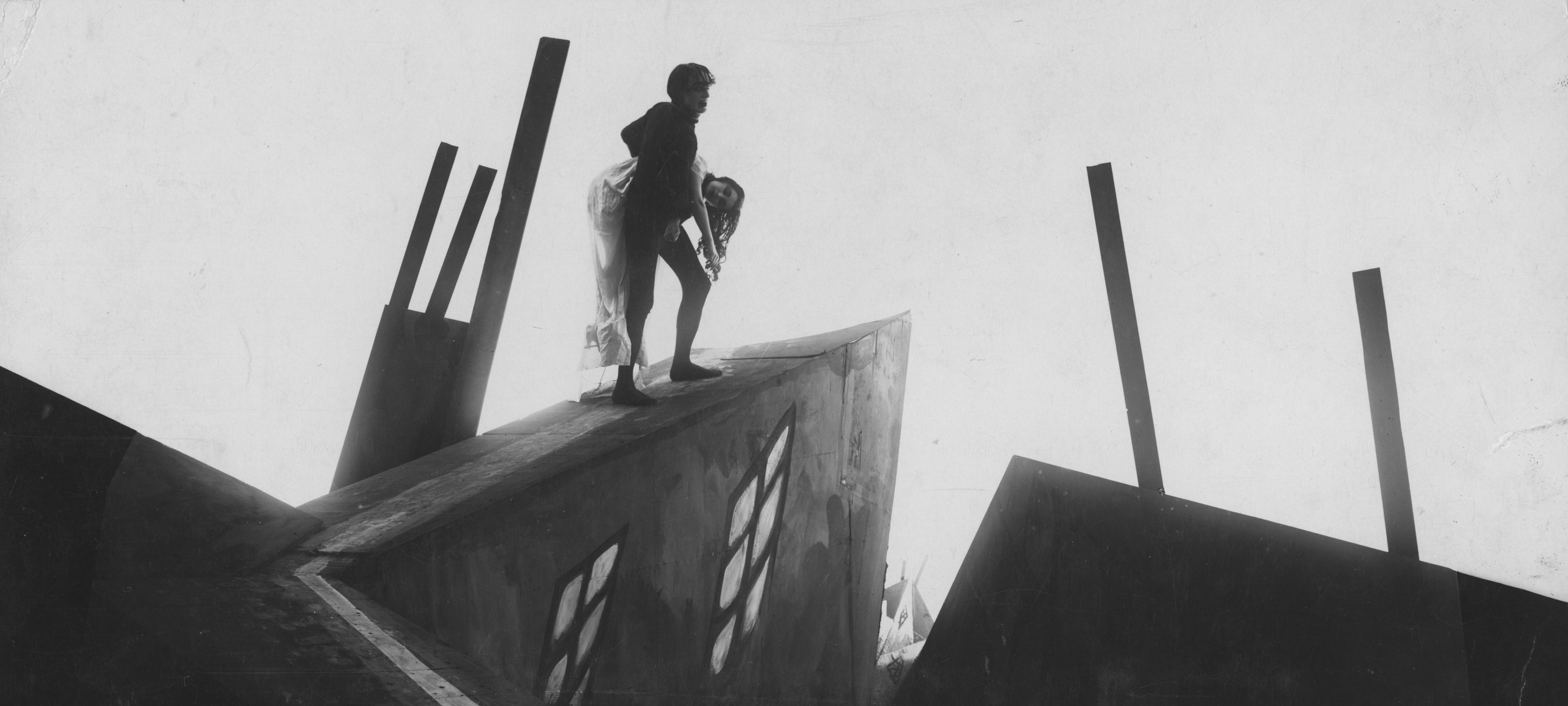The Cabinet of Dr. Caligari (1920) is a dark and enthralling film about a somnambulist, created by Robert Wiene. Despite it's age, the plot, environment and acting are to the standard of a modern day film, making it one of the most prominent movies of its time.
 |
| Fig. 1 |
Described by The Guardian as "a timeless classic, and a visual archetype" (Kermode, 2014), the plot follows Franzis, a young man who investigates his friend's brutal murder and discovers it was the work of a madman, Dr. Caligari, who manipulates a somnambulist, Ceasre, to commit crimes for him. However, there is a twist at the end of the film that reveals it is in fact Franzis who is the madman, obsessed with Dr. Caligari's work. Franzis has devised this whole world around the story of Caligari using the characters around him in the insane asylum where he resides, with the director of the asylum assuming the role of Caligari himself.
The art style in this film reflects the plot amazingly well; where the use of broken perspective creates an otherworldly, almost nightmarish experience. In a review by Roger Ebert of The Cabinet of Dr. Caligari, the scene design is described as "a jagged landscape of sharp angles and tilted walls and windows, staircases climbing crazy diagonals, trees with spiky leaves, grass that looks like knives." (Ebert, 2009). This is a very accurate description of the unique art featured in the film, and Wiene has done this to show we were in a broken place all along: in the head of a madman. This foreshadowing, which lead to the viewer finding out that the story was just the wild fantasies of Franzis, is an excellent example of how the art in the film mirrors the story perfectly.
 |
| Fig. 2 |
There is no denying how influential The Cabinet of Dr. Caligari was in its time, where films used to be a very accurate depiction of real events. The movie is a stark contrast to this stereotype, with the acting and environment being used as a tool to enhance the story, to tell the reader that all isn't well in this world (in Franzis' head), instead of simply showing things as they would actually appear. In a review by Jacob Oller, he accurately sums this up by stating: "this film is here to unnerve you without gunfights, car chases, or any of that ilk. This is creeping discomfort, crawling in your trapezoidal windows and haunting your dreams." (Oller, 2017).
The Cabinet of Dr. Caligari is a film that represents both the unrest in Franzis' mind, as well as having a real world reflection on World War 1. The broken perspective, as well as the story, showing the control that Caligari has over Ceasre the somnambulist, can be likened to the extreme control the government had in the German society, in a position of power over helpless people. Wiene has created a very significant masterpiece that has influenced many films to follow, and was a prominent factor in the making of movie culture as it is today.
Bibliography
Oller, J. (2017). "Psychological Horror Has Been A Thing Since ‘The Cabinet of Dr. Caligari". In: Film School Rejects [online] Available at: (https://filmschoolrejects.com/psychological-horror-thing-since-cabinet-dr-caligari) [Accessed 21 Sep. 2017].
Kermode, M. (2014). "The Cabinet of Dr Caligari review – a timeless classic and a visual archetype." In: The Guardian [online] Available at: (https://www.theguardian.com/film/2014/aug/31/cabinet-dr-caligari-review-mark-kermode-timeless-classic) [Accessed 21 Sep. 2017].
Ebert, R. (2009). "The Cabinet of Dr. Caligari Movie Review" (1920) In: The Guardian [online] Available at: (http://www.rogerebert.com/reviews/great-movie-the-cabinet-of-dr-caligari-1920) [Accessed 21 Sep. 2017].
Illustration List
Fig. 1 - https://homemcr.org/app/uploads/2011/04/The-Cabinet-of-Dr-Caligari-3-e1412607754507.jpg
Fig. 2 -
https://upload.wikimedia.org/wikipedia/en/e/e2/The_Cabinet_of_Dr_Caligari_Holstenwall.png


























